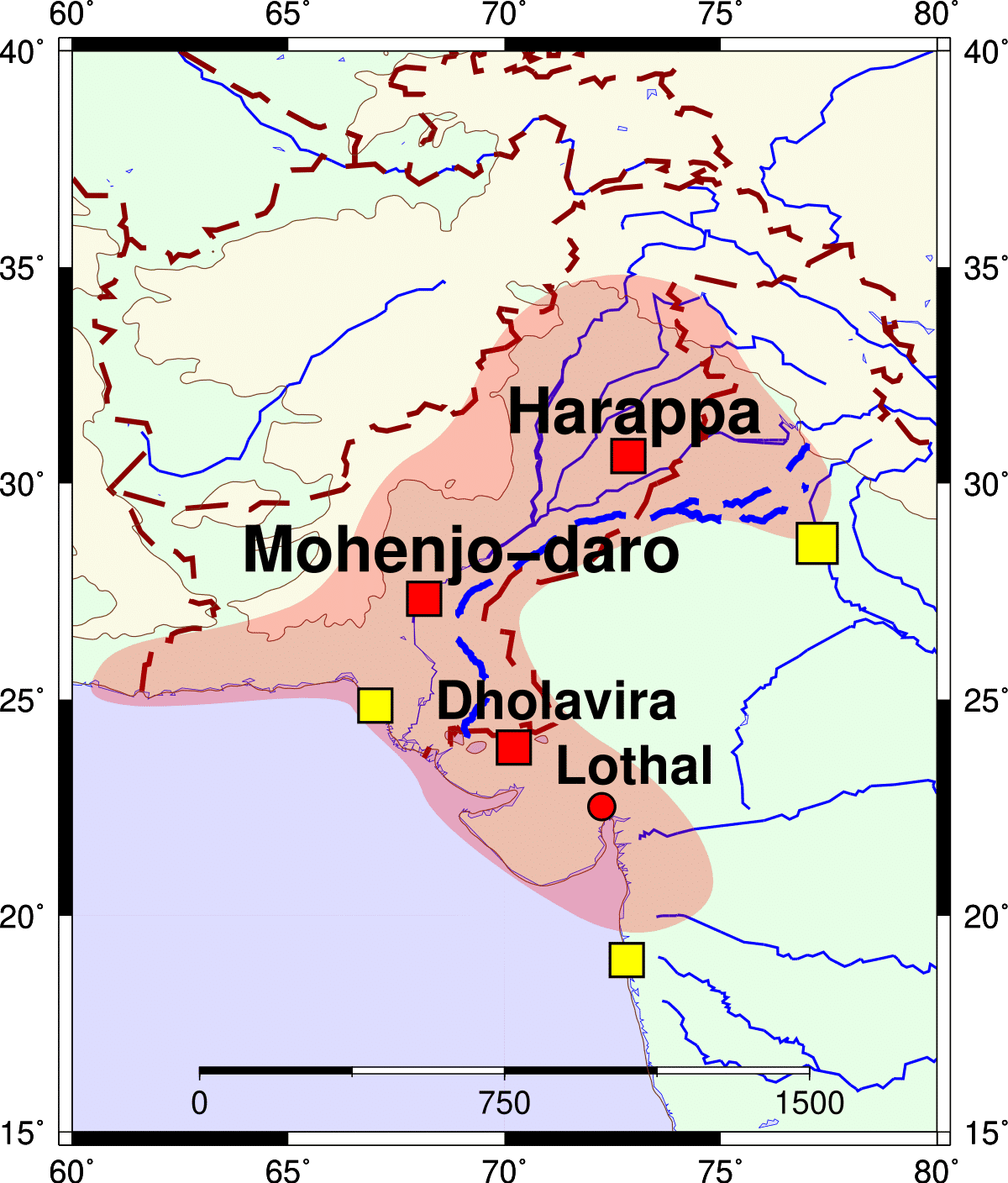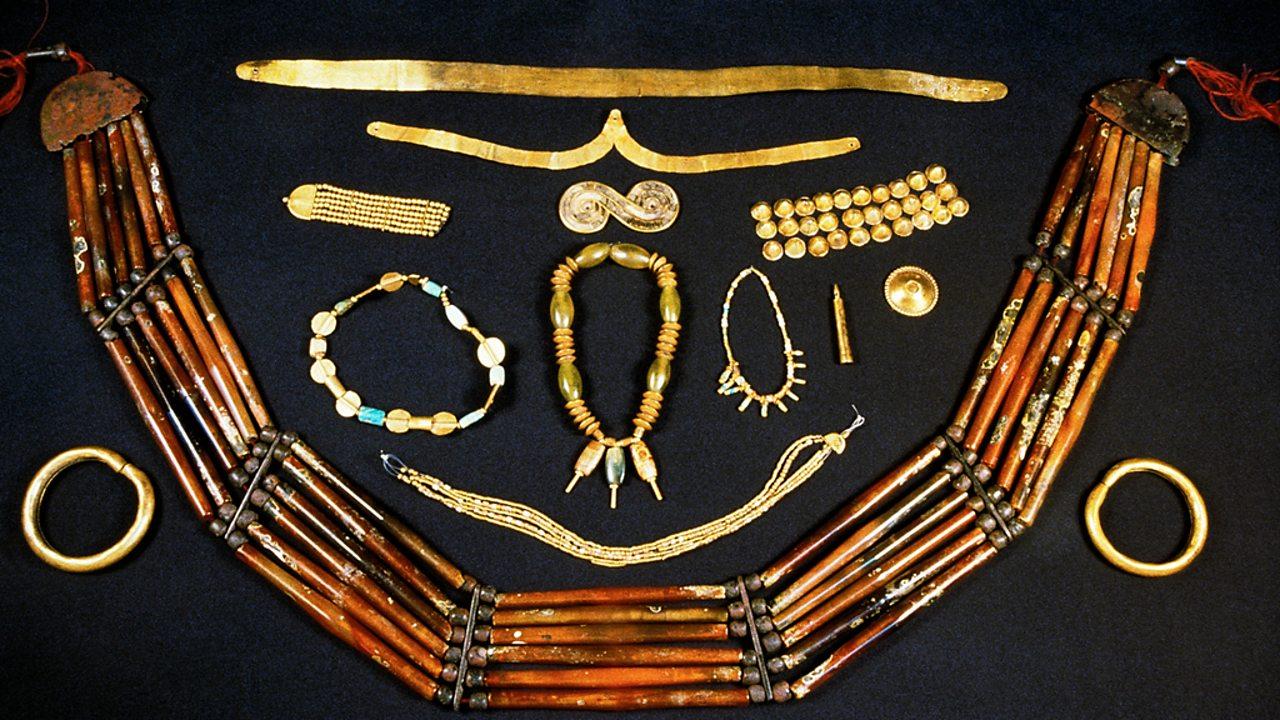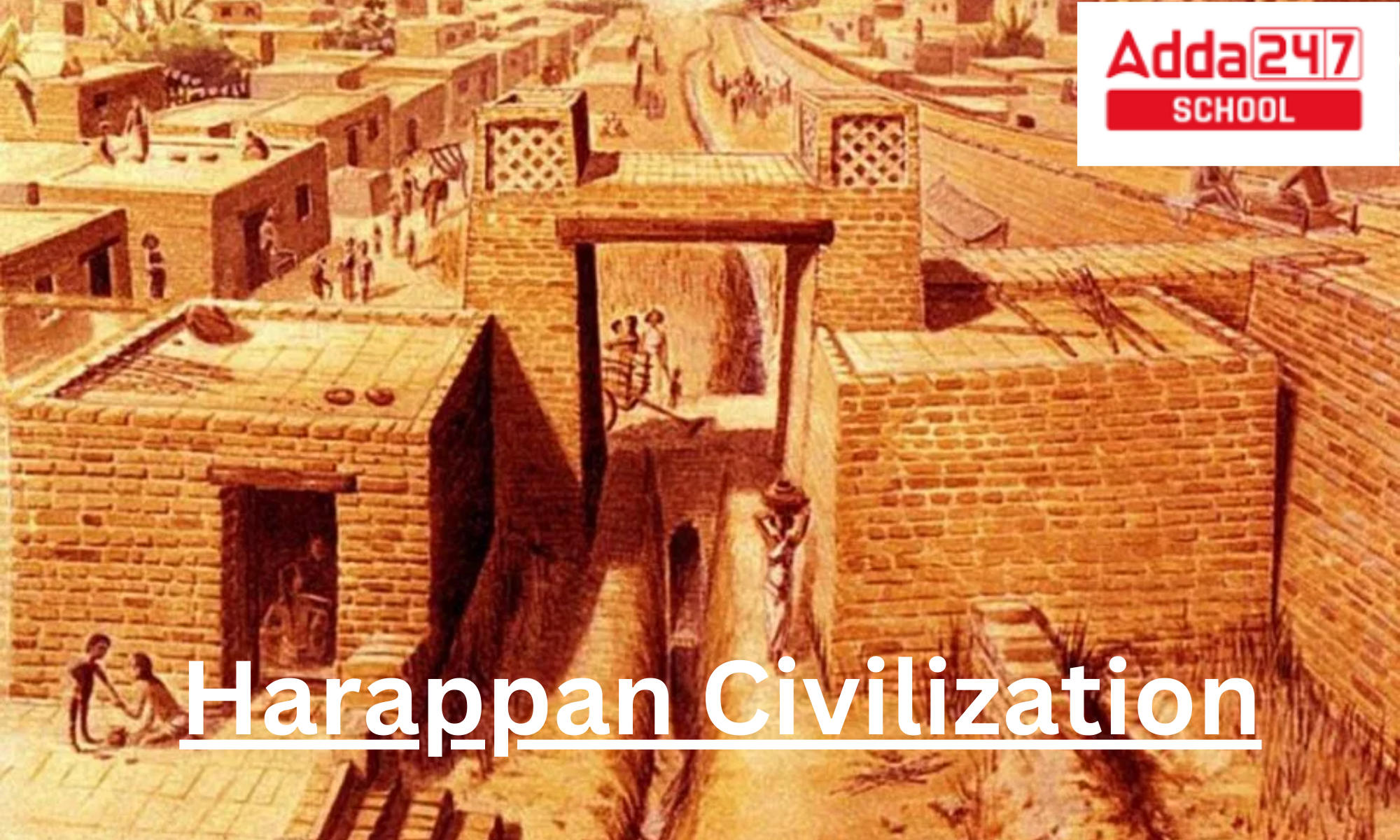Table of Contents
Harappan Civilization Introduction
The first known urban culture on the Indian subcontinent is the Indus civilization, often known as the Indus valley civilization or the Harappan civilization. Although the southern sites may have persisted later into the second millennium BCE, the civilization’s nuclear dates appear to be between 250 to 1700 BCE. The Harappa civilization (Indus Civilization) was the largest of the three early civilizations in the world (the other two are those of Mesopotamia and Egypt).
Harappan Civilization Time Period
Before the discovery of these Harappan settlements, researchers believed that Indian civilization originated in the Ganges valley around 1250 BCE with the arrival of Aryan immigrants from Persia and central Asia. That idea was challenged by the discovery of the ancient Harappan cities, which pushed the Indus Valley Civilization’s existence back in time by another 1500 years and placed it in a very different ecological setting.
Although information about this enigmatic society is still being pieced together, much has been discovered since its rediscovery. Its roots appear to be in a town called Mehrgarh, which is located in the western Pakistani province of Balochistan at the base of a mountain pass. There is proof that this region was populated as early as 7000 BCE.
The three phases of the Indus Valley Civilization—the Early Harappan Phase, which lasted from 3300 to 2600 BCE, the Mature Harappan Phase, which lasted from 2600 to 1900 BCE, and the Late Harappan Phase, which lasted from 1900 to 1300 BCE—are frequently distinguished.
Indus Valley Civilization Time Period
British colonial officials in India were occupied in 1856 supervising the construction of a railway that ran along the Indus River valley and connected the modern-day Pakistani towns of Lahore and Karachi.
Some of the workers found numerous bricks that had been cooked by fire and were stuck in the dry ground as they continued to work. Numerous tens of thousands of comparatively uniform bricks that appeared to be relatively old were present. Despite this, the workmen used some of them to build the roadbed without realizing they were doing so. They soon discovered soapstone objects with delicate artistic marks hidden among the blocks.
These railway workers had stumbled upon the remains of the Indus Valley Civilization, also known as the Harappan Civilization after Harappa, the first of its sites to be excavated, in what was then the Punjab province of British India and is now in Pakistan, even though they were unaware of it at the time and the first significant excavations did not occur until the 1920s. Many archaeologists initially believed they had discovered the remains of the Maurya State, a sizable empire that ruled ancient India between about 322 and 185 BCE.
Indus Valley Civilization Period Urban Planning
The Indus Valley Civilization Period may have had more than five million people living in it at its height. Urban planning, a technical and political process dealing with the utilization of land and the creation of the urban environment, is a skill that the Indus towns are renowned for. They are renowned for their enormous, non-residential building clusters, extensive drainage and water supply systems, and baked brick homes.
Small Early Harappan villages had grown into sizable urban centres by 2600 BCE. These cities are Dholavira, Kalibangan, Rakhigarhi, Rupar, and Lothal in contemporary India, and Harappa, Ganeriwala, and Mohenjo-daro in contemporary Pakistan. Over 1,052 cities and communities have been discovered in total, mostly around the Indus River and its tributaries.
Mohenjo-Daro
It is believed that Mohenjo-daro, which became the biggest metropolis of the Indus Valley Civilization and one of the world’s first significant urban centres, was founded in the twenty-sixth century BCE. Mohenjo-daro was one of the most advanced cities of its day, with cutting-edge engineering and urban planning, and it was situated west of the Indus River in the Larkana District.
Harappa
Up to 23,500 people may have lived in Harappa, a fortified metropolis in present-day Pakistan, where homes were carved and had flat roofs composed of red sand and clay. The city, which covered an area of 370 acres, included fortified administrative and religious buildings similar to those found in Mohenjo-daro.
Harappan Civilization Map
Here is the map of of Harappan Civilization and the various sites of the Harappa Cicilization.

Harappan Civilization Language
The Early Harappans, who lived between 3200 and 2600 BCE, most likely spoke Proto-Dravidian, the origin of all known Dravidian languages. Its roots, which are unrecoverable, undoubtedly date back to the beginnings of human language, just like those of every other language; therefore, they are all equally ancient.
Harappan Civilization River
The Indus River valley was the home of the Harappan civilization. Its two major cities, Harappa and Mohenjo-daro, were situated in the Punjab and Sindh areas of modern-day Pakistan, respectively.
Harappan Civilization Trade
As was said above, the Indus civilization inhabited an area with a fairly homogeneous level of material culture. This entails internal trade within the state and a cohesive, integrated administration. It can be challenging to establish proof of real exportation of goods, but the widespread use of chert blades crafted from the distinctive Sukkur stone and the size of the factory at the Sukkur site strongly point to trade. Other objects, like the nearly similar bronze carts found at Chanhu-daro and Harappa, which require a common origin, also seem to indicate trade.
Harappan Civilization Images

Decline of Harappan Civilization
Around 1800 BCE, the Indus Valley Civilization started to disappear. Archaeological data suggests that trade with Mesopotamia, which is mostly located in present-day Iraq, appeared to have ceased. The large cities’ sophisticated drainage systems and baths were covered over or stopped. Standardized weights and measurements that were used for trade and taxation started to disappear, along with writing.



 Bihar Board 12th Result 2025 Out @ inter...
Bihar Board 12th Result 2025 Out @ inter...
 NEET PG Application Form 2025 at nbe.edu...
NEET PG Application Form 2025 at nbe.edu...
 [Live] CUET UG 2025 Date Sheet @cuet.nta...
[Live] CUET UG 2025 Date Sheet @cuet.nta...










